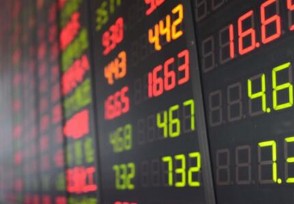纽约联储观点:AAA的信用评级有意义吗?
2020-01-17 09:40:26|新浪财经-自媒体综合|外汇
byNina Boyarchenko
and Or Shachar
Rising nonfinancial corporate business leverage, especially for riskier “high-yield” firms, has recently received increased
byNina Boyarchenko
and Or Shachar
Rising nonfinancial corporate business leverage, esPEcially for riskier “high-yield” firms, has recently received increased public and supervisory scrutiny. For example, the Federal Reserve’s May 2019Financial STability Reportnotes that “growth in business debt has outpaced GDP for the past 10 years, with the most rapid growth in debt over recent years concentrated among the riskiest firms.” At the upper end of the credit spectrum, “investment-grade” firms have also increased their borrowing, while the number of higher-rated firms has decreased. In fact, there are currently only two U.S. companies rated AAA: Johnson Johnson and Microsoft. In this post, we examine recent trends in the issuance of investment-grade corporate bonds and argue that the combination of increased BAA issuance and virtually nonexistent AAA issuance both reduces the usefulness of the BAA–AAA spread as a credit risk indicator and poses a financial stability concern.
近期,美国非金融企业尤其是风险度较高的“高收益债信用级别”企业的财务杠杆率攀升的情况引起了公众乃至监管当局越来越多的关注。比如,美联储在2019年5月期的《金融稳定报告》中提到“在过去十年里美国企业债务的增速超过了同期美国GDP的增速,最近几年大部分的企业债务增量来自于信用风险最高的企业。”信用评级居前的“投资级信用级别”企业也在加大借债的力度,而享有较高评级的企业的数量却在减少。实际上,在美国只有两家企业为AAA评级,即强生公司和微软公司。我们在本文中将回顾近年来美国投资级公司债的发行情况,并揭示出BAA级公司债发行量的大增以及AAA级公司债发行案例实质上的缺失均弱化了BAA级与AAA级公司债之间的信用利差作为信用风险衡量指标的作用,因而引发了对美国金融稳定性的担忧。
Credit Ratings 101
信用评级基本常识
Credit ratings help investors DIFferentiate between bonds with higher credit risk—those assigned a lower credit rating—and lower credit risk—those with a higher credit rating. Because investors are compensated for holding credit risk, higher-rated bonds earn a lower yield. The top of the credit rating spectrum, so-called investment-grade bonds, is bracketed by AAA—the safest credit rating—at one end and BAA (on the Moody’s rating scale) or BBB (on the S P rating scale, equivalently) at the other. Throughout this post, we refer both to bonds rated BAA by Moody’s and those rated BBB by S P as having a BAA rating.
以信用评级为参考,投资者可将高信用风险即评级较低的债券和低信用风险即评级较高的债券区分开来。因为投资者所承担的信用风险应在收益率方面得到补偿,故高评级债券的收益率会比较低。在所有的信用评级中评级靠前的债券.即所谓的投资级债券中最高的是AAA级,位于投资级债券中安全性最高的一端,而穆迪公司的BAA级或与之相当的标准普尔公司的BBB级则处在投资级债券中安全性较低的一端。穆迪公司的BAA级及标准普尔公司的BBB级在本文中均以BAA级来指代。
The difference between the yield on AAA-rated bonds and the yield on BAA-rated bonds with similar maturities issued by firms with similar characteristics caPTures the willingness of investors to hold exposure to corporate credit risk. All else equal, a wider BAA–AAA spread indicates a diminished willingness of investors to bear credit risk. In the lead-up to recessions, investors reallocate their portfolios toward safer securities, as they become more concerned about holding credit risk. As a result, the BAA–AAA spread increases in the lead-up to recessions (see chart below), making the spread a useful indicator of the health of the economy.
具有相似特征的企业所发行的期限相近的AAA级和BAA级公司债收益率之间的利差水平的高低体现的是投资者承担企业信用风险的意愿。如果其他条件不变,而BAA级与AAA级公司债的信用利差出现扩大就说明投资者承担信用风险的意愿不足。在经济衰退即将到来之前,投资者会增加投资组合中的高安全性资产的配置比率,因为投资者会因手中持有信用风险的敞口而坐卧不安。因此,BAA级与AAA级公司债之间的信用利差在经济衰退即将到来之际会变宽,如下图所示,该信用利差的水平就成了能有效地反映美国经济健康程度的指标。
信用利差的水平就成了能有效地反映美国经济健康程度的指标。
The Changing Investment-Grade Landscape
美国投资级公司债市场发生的变化
To understand whether the BAA–AAA spread is as informative today about the state of the economy as it was when more companies were rated AAA, we need to examine how corporate bond issuance has evolved over time. The chart below plots the total offering amount, over time, of bonds issued with credit ratings of AAA; investment-grade, excluding AAA and BAA; BAA; and high-yield. The chart shows that, while high-yield issuance has been declining since 2012, investment-grade issuance has been increasing, with BAA issuance matching or exceeding high-yield issuance in every quarter since the fourthquarter of 2016.
为了搞清楚当前BAA级与AAA级公司债之间的信用利差在反映美国经济健康状况方面的有效性是否能与以前AAA级公司债的发行人数量更多的时候相媲美,我们需要看一下这些年来美国公司债的发行情况是如何变化的。下图为信用评级为AAA级、不含AAA级和BAA级的投资级、BAA级以及高收益债等各类美国公司债的发行量历年来的变动情况。图中显示,2012年以来美国高收益债的发行量出现缩水,投资级公司债的发行量在上升,BAA级公司债的发行量在2016年四季度以来的各个季度里均赶上或超过了高收益债的发行量。
The next chart shows that the increases in BAA issuance occurred across industry groups. Thus, while all of the corporate AAA issuance is concentrated in just two firms, BAA issuance is more widespread, creating a potential mismatch in issuer characteristics between AAA bonds and BAA bonds.
下图显示,各行业的发行人所发行的BAA级公司债都在增加。因而,虽然所有的AAA级公司债都是由两家公司发行的,但BAA级公司债的发行人更具有行业代表性,这种差异有可能导致AAA级公司债和BAA级公司债在发行人特性方面无法形成有效的对比。
Moreover, the next chart shows that while the average maturity of BAA bonds has been increasing over time, the maturity of AAA bonds has remained relatively stable. Thus, not only are the issuers of AAA bonds no longer comparable to the issuers of BAA bonds, but the average maturity of BAA bonds is far greater than the average maturity of AAA bonds, with the disparity in maturity growing over time. That is, the AAA yield represents the market perceptions of the short-term credit risk of two companies, while the BAA yield captures market perceptions of medium-term credit risk of industrial and financial companies more broadly, potentially making the two yields noncomparable.
此外,通过下面这张图可以看到,BAA级公司债的平均剩余期限在过去这些年里出现了增加,而AAA级公司债的平均剩余期限则相对稳定。因此, AAA级公司债不但在发行人方面无法与BAA级公司债进行有效对比,BAA级公司债的平均剩余期限也远超AAA级的公司债,这种在平均剩余期限方面的差异近年来愈加明显。可以这么认为,AAA级公司债的收益率水平代表的是市场对“硕果仅存”的两家AAA级发行人的短期信用风险的认知,而BAA级公司债的收益率水平代表的是市场对代表性更广泛的工业企业和金融企业的中期信用风险的看法,这有可能造成这两个收益率之间不具有可比性。
Implications for Financial Stability
对金融稳定性的影响
Does increased BAA issuance pose a concern beyond making the BAA yield noncomparable to the AAA yield? One way of answering this question is to look at net leverage—the ratio between a firm’s total debt, less cash and short-term investments, and a firm’sEBITDA—by credit rating category. The chart below shows that, while in the late 1990s through early 2000s the average net leverage of BAA firms was lower than that of high-yield firms, in recent years the net leverage of BAA firms has been similar to that of high-yield firms. Moreover, the net leverage of higher-rated investment-grade firms has exceeded the net leverage of high-yield firms since 2003. Thus, on a net leverage basis, investment-grade firms are currently as risky as, if not riskier than, lower-rated firms.
BAA级公司债发行量的大增除了导致BAA级公司债的收益率水平无法与AAA级公司债相提并论以外是否引发了市场的担忧?要想回答这个问题,有一个办法是看一下各信用级别的公司债发行人在净财务杠杆比率方面的差异情况,净财务杠杆比率=(总负债-现金和短期投资)/息税摊销折旧前的利润。下图显示,在1990年代末至2000年代初的期间,BAA级发行人的财务杠杆率的均值比高收益债级别企业要低,但在最近几年里,这两类发行人的财务杠杆率已非常接近。此外,2003年以来评级高一些的投资级企业的净财务杠杆比率超过了高收益债级别的企业。因此从净财务杠杆率的角度来看,如今美国投资级企业的风险度即使不高于低信用评级的企业,也至少可以与之相“匹敌”。
Moreover, recentacademic literaturehas documented that insurance companies divest from bonds that have been downgraded to high-yield. So bonds that are already declining in price because of a deteriorating credit outlook can face further stress from the associated selling pressure. In the current corporate debt landscape, with a greater amount outstanding of BAA-rated corporate debt and higher net leverage of investment-grade debt overall, the possibility of a large volume of corporate bond downgrades poses a financial stability concern.
此外,最近的学术研究成果显示美国的保险公司对被降级到高收益债级别的公司债“一抛了之”。因此,已经因发行人的信用评级展望出现恶化而遭遇价格贬值的公司债会由于相关的出清压力而承受更大的价格下跌压力。在当前的美国公司债市场中,因BAA级公司债的未到期余额以及投资级公司债整体的净财务杠杆比率居高不下所导致的大批美国公司债有可能被降级的情况引发了市场对美国金融稳定性的担忧。
Conclusion
结论
With$9.2 trillion outstandingas of the end of 2018, the size of the corporate bond market in the U.S. rivals that of the mortgage-backed securities market. In this post, we argue that, although much of the post-crisis issuance has been in the investment-grade segment of the market, the large volume of issuance with a BAA credit rating may pose a financial stability concern. Moreover, the maturity and firm-characteristic mismatch between bonds with AAA and BAA ratings reduces the usefulness of the BAA–AAA spread as an indicator of investors’ aversion to credit risk.
截止到2018年末美国公司债市场的未偿余额为9.2万亿美元,规模与美国按揭质押债券市场不相上下。我们在本文中的观点是,尽管在2008年金融危机后美国公司债市场的大部分发行量来自于投资级债券,但BAA级公司债的大量发行会引发市场对美国金融稳定性的担忧。此外,AAA级公司债和BAA级公司债在到期期限和企业特性等方面的不匹配情况导致BAA级和AAA级公司债之间的信用利差在衡量投资者对美国公司债信用风险的好恶程度方面不再有效地发挥晴雨表的作用。
Authors‘ note: The net leverage chart included in the post (above) plots the average net leverage for all firms in our sample, reflecting our focus on the overall corporate sector’s bond issuance. If we, instead, restrict to industrial firms only, the picture is somewhat different, as shown in the chart below, with higher-rated industrial firms having lower net leverage than lower-rated industrial firms.
注意:上图那张净财务杠杆率走势图显示的是所有类型企业的净财务杠杆率的均值,如果仅关注工业企业的净财务杠杆率走势,将是另一番景象,如下图所示,可见高评级工业企业的净财务杠杆率低于低评级的工业企业。
本文标题:纽约联储观点:AAA的信用评级有意义吗?
本文链接:http://www.aateda.com/waihui/77330.html
免责声明:文章不代表泰达网立场,不构成任何投资建议,谨防风险。
版权声明:本文内容均来源于互联网,如有侵犯您的权益请通知我们 ,本站将第一时间删除内容。
相关阅读
-

富时a50是些什么股票 最新指数成分股名单一览
2020-12-05| 239 -

朗新发债什么时候上市 新债申购代码:370682
2020-12-05| 210 -

近期龙头股热点股有哪些 这两只个股登上龙虎榜
2020-12-05| 238 -

这则震撼的消息传来 金融股又有大利好
2020-12-05| 217 -

1000新债中签能赚多少 投资者如何提高中签率?
2020-12-05| 229 -

中芯国际是哪国的 公司最新股价是多少?
2020-12-05| 211 -

消费股票有哪些龙头股 这些上市公司关注度较高
2020-12-05| 240 -

最“差”基金:东吴行业轮动十年仍亏 曾为明星基金规模达到31亿
2020-12-05| 223 -

止盈止损什么意思 常见的方法有哪些
2020-12-04| 228 -

期货投资策略 相关的知识很少人会知道
2020-12-04| 201